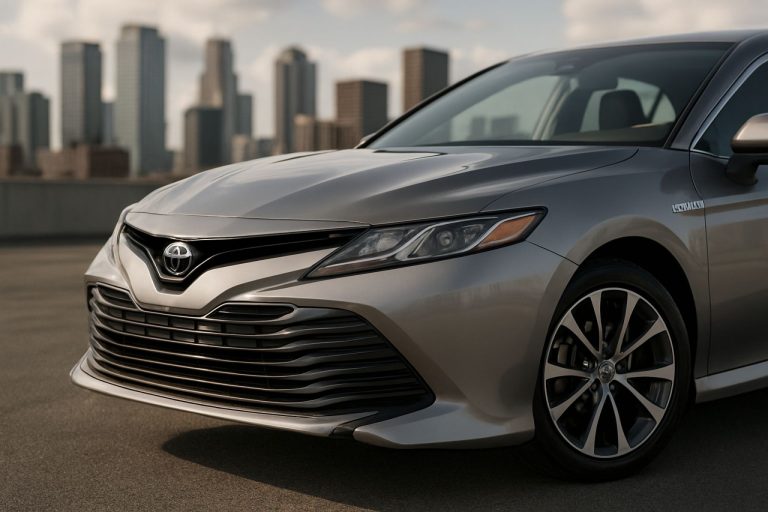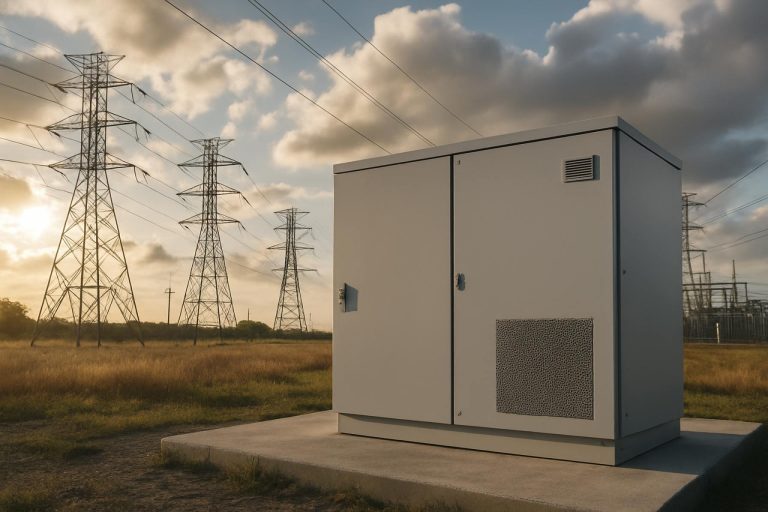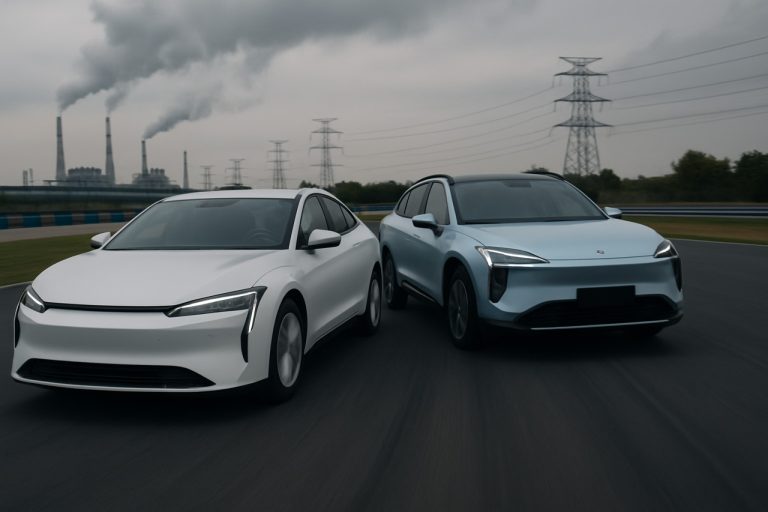
- EV adoption in the U.S. is soaring, with over 1 million electric vehicles sold in 2023, fueling demand for public charging infrastructure.
- The U.S. has about 160,000 public charging ports—far below the projected need, causing frequent congestion, unreliable chargers, and “charging deserts” in many areas.
- Federal support for EV charging expansion is uncertain, raising concerns about meeting the 2030 target of 500,000 stations and ensuring equitable access nationwide.
- While automakers and private investors push EVs, experts warn that insufficient, inconsistent charging could hinder mass adoption, especially in rural and lower-income communities.
- Competing regions like China and Europe are rapidly outpacing the U.S. in public charging infrastructure, intensifying the global race toward sustainable transportation.
https://youtube.com/watch?v=gJYDHbYLCpM
A wave of electric vehicles surges down American highways, their engines silent, their promise unmistakable: a cleaner, greener tomorrow. Yet, beneath this optimism lies an invisible crunch—one that threatens to stall progress in its tracks. Drivers in major cities and rural towns alike already feel the pinch, circling crowded lots in search of a single available charging plug, as the country’s charging network strains under soaring demand.
The Choke Point for EV Dreams
The electric vehicle (EV) market roared past 1 million U.S. sales in 2023—an all-time record—and automakers from Detroit to Silicon Valley bet the farm on battery power. Yet, a critical gap has emerged: America’s public charging network isn’t keeping pace. Today, the U.S. hosts approximately 160,000 public charging ports, according to the U.S. Department of Energy, a mere fraction of what experts say will be needed if EV adoption continues its rapid climb.
Beyond raw numbers, the experience reveals further cracks. Some chargers sputter with broken screens and out-of-service notifications. Congestion spikes in metro areas, with drivers waiting in line at high-voltage fast chargers—if they can even find one. Road trippers traverse “charging deserts” where stations are separated by daunting distances, raising the specter of a new kind of range anxiety.
Policy Shifts: The Uncertain Path Forward
Recent months have seen a shift in the winds of federal support. The pause and potential rollback of funding for public EV infrastructure raises high-stakes questions about the future. The Biden administration once funneled billions toward nationwide charger rollout, aiming for 500,000 public stations by 2030—a key pillar in the effort to cut carbon emissions and compete globally. But evolving political priorities may shrink this vision.
Car companies—including industry giants such as General Motors and Ford—have committed to phasing out combustion engines in favor of electric models, but achieving mass adoption depends on reliable, widespread charging. Utilities and private investors have stepped in, but experts caution that without strong public backing, rural and lower-income communities risk being left behind. Visit energy.gov for the Department of Energy’s charging locator and further details.
The Stakes Grow Ever Higher
Globally, China leads the charge with some 1.2 million public stations—a staggering infrastructure advantage as the world races toward net zero emissions. Europe follows suit, investing heavily to ensure even remote corners remain accessible to electric drivers. The United States, by contrast, faces patchwork development, with coastal states cruising ahead while heartland highways lag far behind.
For every new electric car sold, the sense grows that change isn’t merely possible—it’s inevitable. Yet for millions of Americans, inconvenience and frustration are real, daily obstacles. As manufacturers cut prices and EVs become more appealing, charging must keep up or cede the road to hesitation and stalling adoption.
The road to an electric future isn’t guaranteed. If the infrastructure gap isn’t bridged, the dream of clean, accessible, zero-emission travel could end up stuck in gridlock. Action now—on policy, investment, and technology—is the key to ensuring no driver is left stranded with nowhere to plug in.
Why the EV Revolution Could Hit a Dead End—Unless America Solves This Charging Crisis
Introduction: The EV Boom Meets a Hard Reality
America’s roads are humming with the promise of electric vehicles (EVs), but a hidden infrastructure crisis threatens to shock the nation’s green transition. By 2023, U.S. EV sales soared past 1 million—a historic milestone—yet the public charging network is trailing far behind, raising urgent questions for drivers, investors, and policymakers.
—
Fast Facts: The EV Charging Landscape at a Glance
– Current Network: ~160,000 public charging ports in the U.S. ([energy.gov](https://energy.gov))
– Growth Target: Biden administration aimed for 500,000 public chargers by 2030, but political uncertainty puts this goal at risk ([White House Fact Sheet](https://whitehouse.gov))
– Global Context: China leads with 1.2 million chargers; Europe accelerates investments, while U.S. growth remains uneven
– Charger Types: Level 2 (240V, 4–10 hours to charge) vs. DC Fast Chargers (30–60 minutes for 80% battery charge)
– “Charging Deserts”: Rural and low-income areas face few if any public EV stations
—
Additional Insights and Underreported Facts
Industry Trends & Forecasts
– EV Adoption Projected to Surpass 20% of New U.S. Car Sales by 2025
– Source: International Energy Agency (IEA), [iea.org](https://iea.org)
– Automaker Investments in Charging Networks
– Ford, GM, and Mercedes-Benz have announced multi-billion-dollar alliances to expand reliable fast-charging networks across North America.
– Tesla’s Supercharger Network Opening to All
– Tesla is opening parts of its Supercharger network to other automakers—a move hailed as a gamechanger for compatibility, but rollout is uneven and limited in rural areas.
Real-World Use Cases
– Apartment Dwellers & Renters: Up to 44% of U.S. households lack access to home charging (Rocky Mountain Institute). Solutions like mobile charging vans and workplace chargers are in pilot phases but not yet widespread.
– Fleets & Small Businesses: Delivery companies (Amazon, FedEx) are fast-tracking private chargers to meet sustainability goals and avoid public charger competition.
Tech Features, Specs & Pricing
– Charger Reliability: Studies reveal up to 25% of public fast chargers in some regions are non-functional at any given time (JD Power 2023 EV Public Charging Study).
– Pricing Models:
– Charging can cost as little as $0.12/kWh (off-peak at home) or up to $0.60/kWh at premium fast chargers.
– Charging Apps and Locators: Services like PlugShare, ChargePoint, and Electrify America provide real-time charger maps, but accuracy remains spotty due to reporting delays.
Security, Sustainability & Compatibility
– Grid Impact: The rise in fast charging stresses aging local grids, especially during heat waves; “smart charging” that times electricity usage is emerging as a solution.
– Cybersecurity: Networked chargers pose increasing cyberattack risks—a 2022 Siemens report warns of threats ranging from ransomware attacks to data breaches.
– Standardization: The industry is converging on the North American Charging Standard (NACS), pushed by Tesla, improving cross-brand compatibility.
—
Life Hacks: How to Survive America’s EV Charging Crunch
1. Plan Your Route: Use multiple charging map apps and check reviews before long trips.
2. Stay Flexible: Avoid waiting lines by charging at off-peak hours (late night/early morning).
3. Join Charging Networks: Memberships often provide lower rates and priority access.
4. Maintain Your Adapter Kit: Carry multiple plug types in case you find incompatible chargers.
5. Advocate Locally: Petition your employer or apartment complex for on-site chargers.
—
Pros & Cons Overview
| Pros | Cons |
|—————————————-|—————————————|
| Lower running costs | Charging network gaps |
| Reduced emissions | Charger reliability issues |
| Increasing long-range EV choices | Higher upfront price |
| Ability to fuel at home (if possible) | Grid stress & cybersecurity concerns |
| Often eligible for incentives | Apartment dwellers face hurdles |
—
Most Pressing Reader Questions—Answered
1. Will charging get faster and easier?
Yes—next-generation chargers (up to 350kW) can add ~100 miles in under 10 minutes. But widespread access remains several years away.
2. Are there hidden costs to public charging?
Yes. Some networks charge idling fees if your vehicle stays plugged in after reaching full charge.
3. Will rural and low-income communities be left behind?
Risk is high. Federal/state incentives and partnerships with utilities are crucial to closing the gap. Experts urge strong policy support to ensure equity ([energy.gov](https://energy.gov)).
4. How secure are public EV chargers?
Basic security is improving, but experts recommend using payment apps rather than swiping credit cards directly at the station.
—
Controversies & Limitations
– Political Uncertainty: Delays and reversals in government funding inject major instability into build-out plans.
– Business Model Debate: Who will pay for unprofitable rural chargers—taxpayers, utilities, or automakers? Debate is intensifying.
– Technology Fragmentation: Early chaos over plug standards, payment methods, and charger speeds—though the situation is stabilizing.
—
Quick Actionable Recommendations
– For Drivers: Download 2–3 charging map apps, and monitor charger reviews before travel.
– For Property Owners: Investigate available federal/state grants for installing workplace or multifamily EV chargers.
– For Policy Advocates: Push for “right to charge” laws, ensuring all residents can access at-home charging.
– For City Planners: Prioritize public charging in underserved communities to ensure equitable adoption.
—
For comprehensive guidance and the latest charging map, visit [energy.gov](https://energy.gov).
—
Conclusion: Act Now or Risk Gridlock
America’s EV revolution holds incredible promise but faces a pivotal moment. Only decisive investment, robust policy, and innovative local action will ensure that green mobility is not just a dream for a privileged few, but a reality for all. Take the next step—whether as a driver, policymaker, or business owner—to keep America’s electric future charging ahead.



